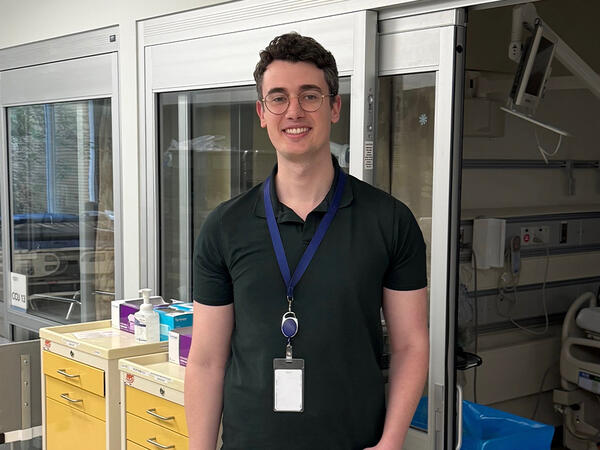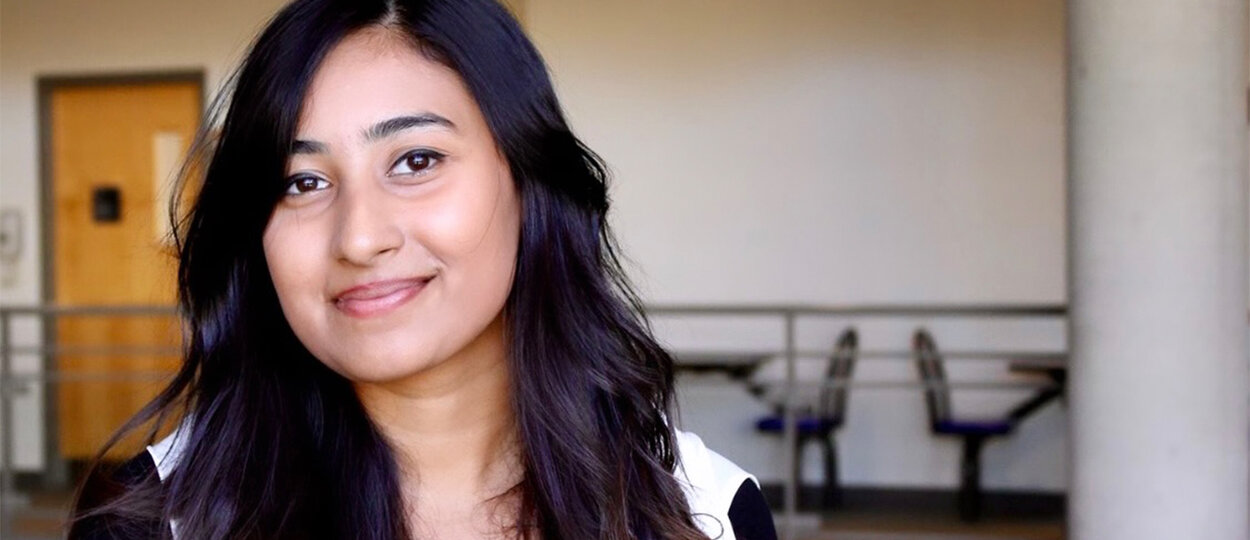U of T Centre for Study of Pain has educated more than 17,000 students from all health profession faculties since program’s inception
With research providing new information about how pain works and pain management practice frequently changing, the next generation of health care professionals is learning to navigate the complex environment of pain management.
“Pain care has shifted so much. It’s important for our students to understand not just where we are but understand how we got here, what it means for them, and how they will navigate the system,” says Karen Ng, clinical pharmacist at the Toronto Academic Pain Medicine Institute (TAPMI) and co-chair of the Interfaculty Pain Curriculum (IPC). “It's important that we equip our students to understand that shift. Pain management is a fluid and dynamic practice, and students need to have the knowledge and skills to work within that fluidity.”
In the past several years, how clinicians understand and approach the management of pain has changed significantly. Chronic pain has become recognized as its own disease, not just a symptom of other conditions; the opioid epidemic has caused health care professionals to rethink how opioids are used to manage pain; and cannabis has become more accepted for pain management. There’s also been a greater recognition of the importance of tailoring care to better meet the unique needs of patients across different communities, as pain does not affect all communities equally.
"Through the IPC, we are building capacity and supporting our students and future care providers to understand the diagnosis of chronic pain, the complex interplay of the pain experience with one’s environment, and how we apply the principles of self-management to support patients.”
“There has been a shift toward understanding the inequality in access to pain management and how different populations are able to access pain management,” says Ng. “There’s also a focus on de-medicalizing pain management and moving toward more of a self-management paradigm. Through the IPC, we are building capacity and supporting our students and future care providers to understand the diagnosis of chronic pain, the complex interplay of the pain experience with one’s environment, and how we apply the principles of self-management to support patients.”
Interdisciplinary program models pain care in real world settings
Within this context of a continuously changing understanding of pain, the IPC, led by U of T’s Centre for the Study of Pain, has provided more than 17,000 students from all of U of T’s health profession faculties with unique, high-quality pain education since 2002.
Each March, approximately 1,200 students from pharmacy, medicine, nursing, dentistry, social work, and physical and occupational therapy come together to learn about pain and pain management. The curriculum includes profession-specific lectures, as well as opportunities for students to work together in interdisciplinary teams on patient cases. The interdisciplinary approach mimics how care is provided in the real world. In fact, other institutions are looking at the IPC as a model of how to offer interdisciplinary pain education.
“It aims to model the kind of care that people living with pain deserve to get,” says Dr. Abhimanyu Sud, assistant professor in the Temerty Faculty of Medicine and former co-chair of the IPC. “It’s one of the few opportunities, even outside of pain, where pre-licensure trainees can be together and learn in the same room and work on cases together.”
Sud says that some clinicians have recognized the biological, psychological, and social impacts of pain going as far back as the 1970s, and evidence of the effectiveness of interdisciplinary care teams for pain management has been available from the 1990s. However, that model of care has not always been accessible to patients with chronic pain. The IPC helps to train the next generation of health care providers to work together to provide the best possible care that centres patients.
“We need to be working together across professions and directly with patients, and we need to centre patients in conversations on what pain care can and should look like,” says Sud. “There’s always room for improvement but centring the perspectives of people living with pain has been an important part of the curriculum.”
Students value opportunities to hear from patients and work collaboratively
Hazra Chowdhury, a fourth-year Doctor of Pharmacy (PharmD) student at the Leslie Dan Faculty of Pharmacy, participated in the IPC in 2021. She particularly valued the opportunity to hear directly from people with lived experience with chronic pain.
“That was really eye-opening for us as future health care practitioners to hear,” she says. “At that point, I hadn’t had much exposure to working with people living with chronic pain, so it was really important to hear their stories to help contextualize everything we were learning about pain care.”
Chowdhury was able to apply learnings about patient-centred care, using appropriate language, and being mindful of how she asked patients questions about their pain to her recent rotation at TAPMI, where Karen Ng was one of her supervisors.
“Living with chronic pain really does impact your life. A lot of the patients we saw at TAPMI couldn’t work or do basic daily activities anymore, and it impacted their family life and social life,” says Chowdhury. “The IPC and rotation helped me improve my listening skills and become a more empathetic provider. It gave me a whole new perspective on patient care.”
Second-year Lawrence S. Bloomberg Faculty of Nursing student Zaynashae Boreland will be taking the curriculum in March 2023 and is a student representative on the IPC’s evaluations committee. She has a longstanding interest in pain and will soon be starting a job working with a research lab that has developed a pain education and self-management app for pediatric patients. The IPC will be the first in-depth pain education of her program, and she is looking forward to learning more about the topic alongside students from other faculties.
“We are all being trained differently, and we all do different jobs, but I’m excited to learn how we can work well together with our different scopes of practice and knowledge to optimize the care of the patient,” says Boreland. “There’s only so much you can do as a nurse or a physiotherapist or a pharmacist, but if we work together, we can do wonders for our patients.”
More News
Image

Pharmacy alum’s research shows how full-scope practice improves cancer care
Honoured with a national award, Adrian de Boer says his residency experience was a powerful reminder that he's making a meaningful change to the pharmacy profession.
Read More
Image

Pharmacy alum passionate about helping community pharmacists practice to full scope
As a pharmacy leader at Rexall, Heidi Wittke uses frontline experience to lead initiatives that improve patient care
Read More
Image

Bridging Research and Industry: GRIP 2025 highlights innovation and real-world impact
Over 200 attendees from academia, healthcare, and industry gathered last week for the 2025 GRIP symposium, celebrating the depth and diversity of graduate student research.
Read More
